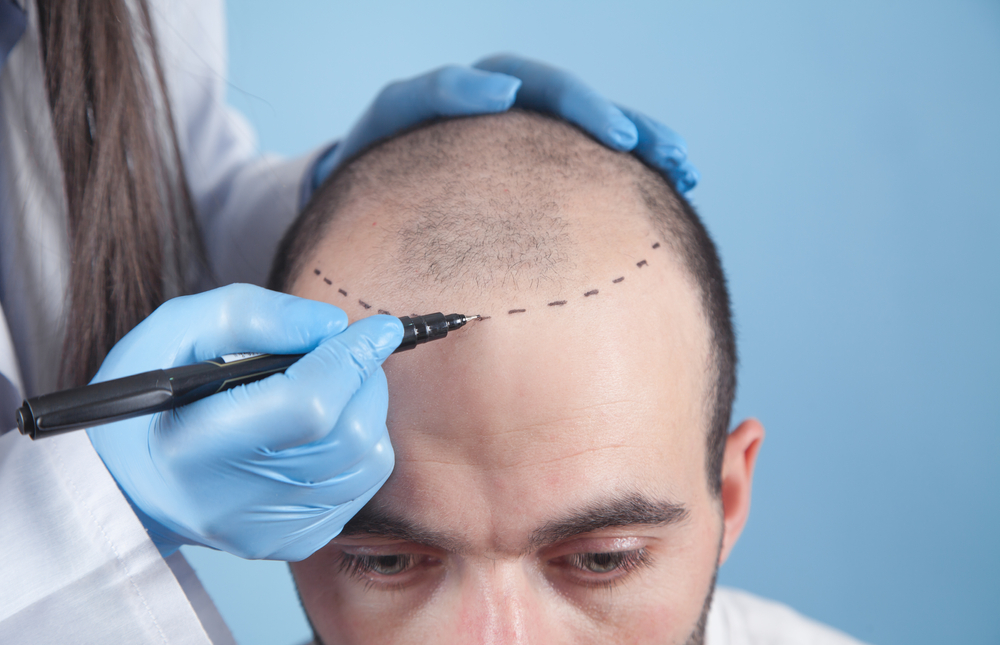Introduction:
While hair loss on the scalp is a common concern, some individuals also experience thinning or lack of facial hair, particularly in the beard and eyebrow areas. Facial hair transplant procedures offer a solution to enhance facial aesthetics and restore confidence. This article delves into the options available for beard and eyebrow hair transplants, the candidacy criteria, and the role of a dermatologist or hair transplant surgeon in achieving natural-looking results.
Consulting a Dermatologist:
Before undergoing a facial hair transplant, it's essential to consult with a dermatologist or hair specialist to assess your candidacy and discuss your treatment options. A dermatologist can evaluate the quality and density of your donor hair, the underlying cause of your facial hair loss, and your overall health to determine whether you're a suitable candidate for a hair transplant procedure. In Mumbai, individuals can seek out the expertise of the best hair transplant surgeon in Mumbai to receive personalized recommendations and guidance tailored to their unique needs and goals.
Understanding Beard Transplants:
Beard transplants involve the surgical transplantation of hair follicles from the donor area (typically the back of the scalp) to the beard area to enhance facial hair density and fill in patchy or sparse areas. The procedure is performed under local anesthesia, and individual follicular units are meticulously harvested and transplanted to create a natural-looking beard. Beard transplants can address a variety of concerns, including thinning beard hair, uneven growth, and facial scarring, resulting in a fuller and more masculine appearance.
Factors Influencing Beard Transplant Results:
Several factors influence the results of a beard transplant, including the quality and density of the donor hair, the patient's skin type and healing ability, and the skill and experience of the surgeon performing the procedure. The direction and angle of hair growth, as well as the spacing and distribution of transplanted follicles, play a crucial role in achieving natural-looking results. A skilled hair transplant surgeon can customize the treatment plan to match the patient's facial features and aesthetic preferences, ensuring optimal outcomes.
Considerations for Eyebrow Transplants:
Eyebrow transplants involve the surgical transplantation of hair follicles to restore or enhance eyebrow shape, density, and definition. The procedure is suitable for individuals with sparse or thinning eyebrows due to genetics, overplucking, trauma, or medical conditions. Eyebrow transplant surgery is performed under local anesthesia, and follicular units are extracted from the donor area and meticulously transplanted into the eyebrow region. The surgeon carefully considers factors such as eyebrow shape, arch, and symmetry to create natural-looking results that complement the patient's facial features.
Techniques for Facial Hair Transplants:
Facial hair transplants can be performed using various techniques, including follicular unit transplantation (FUT) and follicular unit extraction (FUE). In FUT, a strip of donor hair is harvested from the scalp, and individual follicular units are dissected and transplanted into the recipient area. FUE involves the extraction of individual follicular units directly from the scalp using a specialized punch tool, followed by transplantation into the desired facial hair area. Both techniques allow for precise placement of hair follicles to achieve natural-looking results with minimal scarring.
Recovery and Maintenance:
Following a facial hair transplant, patients may experience some swelling, redness, and discomfort in the treated areas, which typically subside within a few days to a week. It's essential to follow post-operative care instructions provided by the surgeon to promote healing and minimize the risk of complications. Patients can expect transplanted hair to shed within the first few weeks after the procedure, followed by gradual regrowth over several months. Once the transplanted hair has fully grown, regular grooming and maintenance are necessary to maintain the desired facial hair appearance.
Conclusion:
Facial hair transplant procedures offer a solution for individuals seeking to enhance their beard and eyebrow aesthetics and address concerns related to facial hair loss. Consulting with a dermatologist or hair transplant surgeon is essential to evaluate candidacy and discuss treatment options tailored to individual needs and goals. In Mumbai, individuals can seek out the expertise of the best hair transplant surgeon in Mumbai to achieve natural-looking results and restore confidence in their facial appearance. By understanding the options available for beard and eyebrow transplants, patients can take steps towards achieving their desired facial hair goals and enhancing their overall facial aesthetics.





Comments